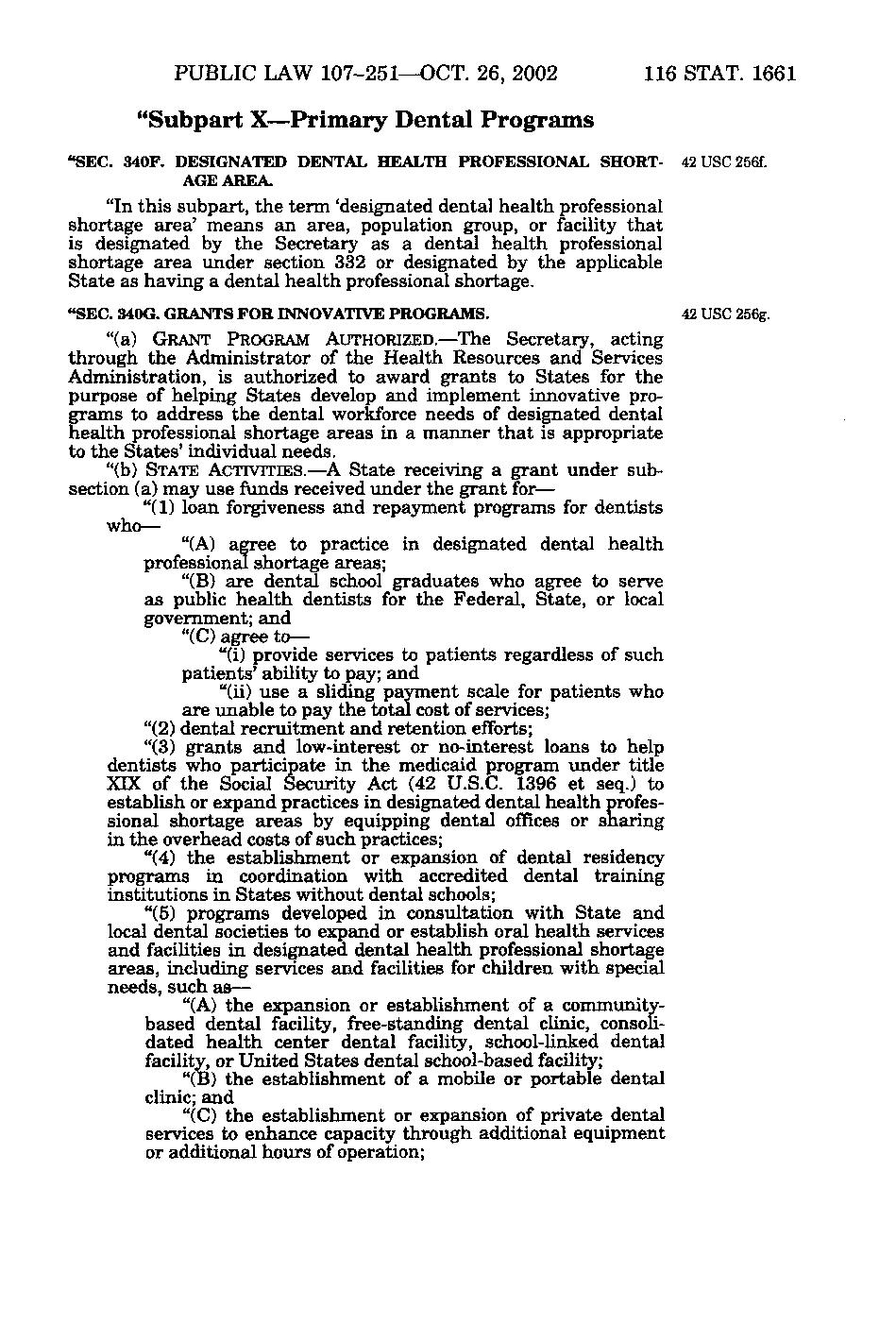PUBLIC LAW 107-251—OCT. 26, 2002 116 STAT. 1661 "Subpart X—Primary Dental Programs "SEC. 340F. DESIGNATED DENTAL HEALTH PROFESSIONAL SHORT- 42 USC 256f. AGE AREA. "In this subpart, the term 'designated dental health professional shortage area' means an area, population group, or facility that is designated by the Secretary as a dental health professional shortage area under section 332 or designated by the applicable State as having a dental health professional shortage.
- SEC. 340G. GRANTS FOR INNOVATIVE PROGRAMS.
42 USC 256g. "(a) GRANT PROGRAM AUTHORIZED.—The Secretary, acting through the Administrator of the Health Resources and Services Administration, is authorized to award grants to States for the purpose of helping States develop and implement innovative programs to address the dental workforce needs of designated dental health professional shortage areas in a manner that is appropriate to the States' individual needs. "(b) STATE ACTIVITIES. —^A State receiving a grant under subsection (a) may use funds received under the grant for— "(1) loan forgiveness and repayment programs for dentists who— "(A) agree to practice in designated dental health professional shortage areas; "(B) are dental school graduates who agree to serve as public health dentists for the Federal, State, or local government; and "(C) agree to— "(i) provide services to patients regardless of such patients' ability to pay; and "(ii) use a sliding payment scale for patients who are unable to pay the total cost of services; "(2) dental recruitment and retention efforts; "(3) grants and low-interest or no-interest loans to help dentists who participate in the medicaid program under title XIX of the Social Security Act (42 U.S.C. 1396 et seq.) to establish or expand practices in designated dental health professional shortage areas by equipping dental offices or sharing in the overhead costs of such practices; "(4) the establishment or expansion of dental residency programs in coordination with accredited dental training institutions in States without dental schools; "(5) programs developed in consultation with State and local dental societies to expand or establish oral health services and facilities in designated dental health professional shortage areas, including services and facilities for children with special needs, such as— "(A) the expansion or establishment of a community- based dental facility, free-standing dental clinic, consolidated health center dental facility, school-linked dental facility, or United States dental school-based facility; "(B) the establishment of a mobile or portable dental clinic; and "(C) the establishment or expansion of private dental services to enhance capacity through additional equipment or additional hours of operation;
�
